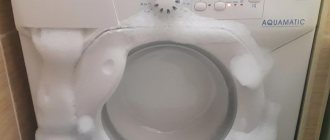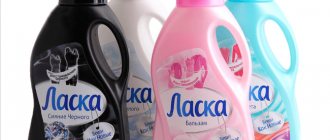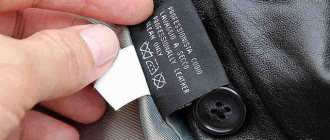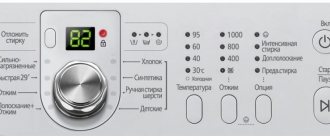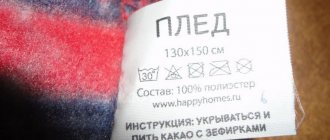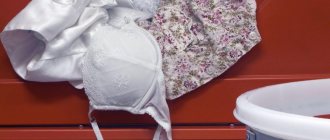Modern clothing for hunting, fishing and other types of outdoor activities, in most cases, is made from specialized membrane fabric. This fabric is highly waterproof and windproof, but allows steam generated from the inside of the material to escape. Clothing made from two-layer or three-layer membrane fabric is comfortable, does not get wet in the rain, allows you to feel comfortable in windy inclement weather and does not allow you to sweat, even if you have to move a lot vigorously.
Intensive use and contamination of clothing reduces the beneficial functions of the unique material. To prevent this from happening, things need to be taken care of. We will reveal some secrets of caring for products made from membrane fabric in this article.
Features of membrane fabric
Why do membrane clothes require special care? It's all about the properties of the pore membrane - one of the main materials used in sewing equipment for athletes, tourists, hunters and fishermen.
The pore membrane is a thin water-repellent material penetrated by a network of microscopic holes. The holes are too small for water to leak through, but large enough to allow water vapor molecules to pass through. If the integrity of the material is violated, the size of the cells increases or decreases, or becomes clogged, the properties of the fabric deteriorate or disappear. For this reason, when caring for membrane clothing, you need to follow a number of rules.
Preparatory stage
Thermal jackets are not designed for prolonged soaking, as we already mentioned. The membrane does not like very hot water, as well as rough mechanical influences.
Put away hard brushes, as they can ruin the item. It is better to rub individual contaminated areas with a soft sponge. How to wash such a “sissy”?
Let's figure it out now. The first thing to do is to gently clean the item using a soft brush.
After dust and dry dirt have been removed, check the pockets and fasten all buttons and zippers. The jacket is ready for washing.
When and how to wash?
Even if no visible dirt is found on the clothing, it must be washed periodically. The fact is that in addition to street dirt and soot, we effectively dirty our clothes ourselves - sweat, sebaceous secretions, skin particles, etc. get on them. Items made of membrane fabric are very sensitive to such pollution, since human waste products clog the smallest holes through which the clothing “breathes”, and its unique properties disappear.
How to determine that fishing and hunting clothes need to be washed? Easily! In addition to external manifestations and a perceived unpleasant odor (which you definitely shouldn’t let it get to), there are several signs that it’s time to wash things:
- In rainy weather, things become heavy and seem to swell. The inner layer may become damp.
- With intense movement, a “steam room effect” appears - steam and moisture are poorly removed outside.
- In a strong wind, you can feel the blowing.
Clothes made from membrane fabric can be washed by hand or in a machine, unless otherwise indicated on the product tag. During the procedure, the following rules should be observed:
- Do not use chlorine-containing products (bleaches, stain removers, conditioners, etc.) - chlorine destroys the membrane structure.
- Wash at a temperature no higher than 30-40 degrees Celsius.
- Use only liquid shampoos and detergents (preferably made specifically for membranes).
- Things are thoroughly rinsed (2 or 3 times) in cool water.
When washing in a machine
It is necessary to ensure that there is no residue left in the powder and conditioner blocks from washing conventional items (with chlorine). If they exist, they need to be removed.
Washing mode: “Synthetic”, “Delicate” or “Sport”. It is not recommended to wring out and dry such clothes in a machine.
When washing by hand
When hand washing trousers, jackets or suits made of membrane fabric, do not rub their parts against each other. It is unacceptable to strongly crush the material, deform it, or squeeze it with force. Particularly dirty areas can be cleaned with a sponge or soft brush.
Heavily soiled items can be soaked in water and detergent for one to two hours. If you don’t have a special shampoo on hand, you can wash it in water with laundry soap dissolved in it.
Products should be rinsed 2-3 times in cool water. During the last rinse, you can add an antistatic agent to the water.
Membrane washing agent UNIPUKH 350 for 1 pc. Balm for washing membrane fabrics NOVATEX NOVATEX 40 for 1 pc.
Conclusion
Membrane clothing is not as difficult to care for as it seems at first glance. Tips and recommendations are written on the bottles of most specialized products, as well as on the clothing itself. The earlier a product is purchased, the more impregnation it requires.
In most cases, there are no difficulties when washing, ironing and drying. It is enough to follow simple conditions and perform all actions in accordance with the specified order. Then the properties are restored and preserved faster.
Drying
After washing, membrane items should be dried. Unlike regular clothes, delicate fabrics cannot be dried on a radiator or in the drum of a washing machine. The ideal way to dry is on a horizontal surface in the most straightened form. If there is no way to lay things out, you can dry your clothes by hanging them on hangers. Hair dryers and fan heaters should not be used during the drying process. Clothes should not be exposed to direct sunlight.
Clothes made from membrane fabric cannot be ironed.
Drying and ironing membrane items
In this case, there are also several recommendations:
- You can simply hang the clothes on a hanger in a room where there is good ventilation.
- It is not recommended to use a battery to resolve the issue.
- After the initial drying, you can additionally place the fabric inside the machine and then wait up to 20 minutes. Then the restoration of the coating will be faster. And the positive qualities of the material will remain for a longer period.
When ironing, use only a warm iron, not hot. It is important to place a towel, another type of thick fabric, between the product and the iron. When ironing, you should stop using steam altogether.
Stain removal and dry cleaning
Small stains from the products are washed off with a soft sponge or a brush with not very stiff bristles. You can remove dirt under running water from a shower or tap. Apply a special shampoo or liquid detergent to the stain. Do not scrub the stained area with soap.
Fresh grease stains should be frozen with a piece of ice, and then carefully scraped with the blunt side of a knife from the edges to the center (so as not to smear it even more). Then, treat the stained area with liquid detergent and wash the item after 30-60 minutes. Resin stains can be cleaned in the same way.
Whether it is permissible to dry-clean clothes made from membrane fabric is determined by the manufacturer. In most cases, such permission is given, but with a list of additional restrictions. These restrictions are displayed on the tag and the dry cleaning staff must be informed about them.
General care recommendations
In most cases, dry cleaning of membrane clothing is acceptable. But it’s best to read the manufacturers’ recommendations here too. It is better to personally ask employees to use only colorless distilled hydrocarbon solvents. The acceptable composition is DWR, it is equally suitable for cleaning and further processing of the product.
For most sports and outdoor clothing, so-called universal products are produced. But some impregnations have a narrow purpose.
Treatment with protective agents
To ensure that clothing for fishing and hunting does not become less comfortable over time and does not lose its water-repellent properties, manufacturers recommend applying special impregnation agents to it. Impregnations containing Teflon or silicone create a film that repels water and causes it to roll off the surface of things.
Manufacturers of impregnations produce compositions in the form of sprays and in the form of a liquid that must be added to the water when rinsing.
- Sprays
.
Advantages
: they are easy to apply and dry quickly.
The disadvantage
is uneven spraying in different areas. - Liquid impregnations
.
The advantage
is uniform application.
The disadvantage
is the high consumption of substance. Products are treated with impregnations after cleaning or washing. You can apply the substance to dry items (spray).
Impregnation of clothes
The top layer is impregnated at the production stage. The water-repellent composition allows the fabric to always remain dry. But over time, after 4-5 washes, this composition is gradually washed out, and the top layer of clothing gradually allows moisture to pass through.
To prevent this from happening, you need to process the clothes yourself. Impregnation for membrane clothing can be purchased in the form of liquid products and aerosol sprays.
Advice! When choosing a product, it is better to consult with the seller which one is suitable for your clothes.
When using liquid, you need to prepare a solution and rinse your clothes in it. The manufacturer indicates the ratio of liquid impregnation and water in the instructions for use. It must be strictly followed. The aerosol product is simply sprayed evenly onto the fabric. The frequency of use for a liquid product is once every 2-3 washes, for an aerosol - once a month, if the item is used actively, or less often.
Attention! Excessive and frequent use of impregnation clogs the pores in the membrane and reduces its properties.
In any case, the procedure is carried out only after washing. It should be taken into account that after repeated application of impregnation, the color of the product may change.
Storage
The rules for storing winter and demi-season clothing made of membrane fabric have a couple of differences from the rules for storing ordinary items:
- Firstly, since the membrane does not like deformation, the products are stored flat. They can be laid or hung on hangers. It is recommended to use covers to protect against dust.
- Secondly, products must be stored in a dry place.
Just like regular clothes, things are stored clean. A pleasant or neutral odor is desirable in the storage location.
How to care for membrane clothing?
Regular care of membrane clothing is very important. This determines how long the product will last.
The following recommendations will help increase their lifespan:
- It is necessary to wash clothes with a membrane when they become dirty. Recommended frequency 1-2 times per season, depending on the frequency of use.
- You need to store such things in a closet, as they easily absorb foreign odors - food, tobacco smoke, perfume.
- The storage area for membrane products should not be damp. It is advisable that it be clean and well ventilated.
Effective care products
For the care of clothing for fishing and hunting made of membrane fabric, the Trofey online store presents to customers effective and high-quality products from domestic and foreign brands:
- Water-repellent impregnation TX Direct Wash-in 300 ml – composition for rinsing. It is evenly distributed over the surface of the fabric, providing a water-repellent effect. Can be used for both machine and hand washing. Maintains a “breathable” effect.
- GRANGERS 2022 Performance Wash 300 ml – composition for gentle cleaning of membrane fabric. Recommended for processing outerwear. Removes dirt without damaging fabric. Effective at temperatures from + 30 degrees. Can be used for hand and machine washing.
- UNIPUKH laundry detergent – without chlorine and aggressive substances. Forms foam well. Suitable for machine and hand washing. The bottle is designed for 3 uses.
Regular and proper care of clothes made of membrane fabric, as well as the timely use of special products, extend the life of your favorite items and help them maintain their unique properties from the first to the last day.
Detergent for washing jackets with membrane
It is worth noting that the ideal option for washing membrane jackets are special products developed by manufacturers of such products. Some manufacturers make two-in-one products that are designed for washing and additional impregnation of the membrane.
Detergent for washing jackets with membrane:
- Washing liquid SALTON Sport for products with climatic membranes
- Synergetic washing gel for sportswear and membrane fabrics
- Trekko Tech Wash washing gel membrane fabrics
- washing liquid for sports and outdoor clothing
Membrane properties
For manufacturers of membrane clothing, the main task is to use such technology not only for sewing sports equipment, but also for everyday things, because such material has many advantages.
If we take a waterproof membrane jacket and “saw” it into pieces, we will see matter that consists of the following:
- Outer fabric treated with impregnation to repel water.
- A membrane layer having a porous structure similar to a mesh.
- Fabric covering and protecting the membrane mesh from mechanical stress.
Thanks to all these layers, clothes made from such fabric become durable, light and comfortable. The previously listed properties of the membrane, namely breathability, heat retention and moisture protection, are necessary for clothing for people leading an active lifestyle.
The main “ingredient” of the membrane material is the finest mesh, the pores of which do not allow moisture to pass through, but, on the contrary, push them out when a person sweats.
Despite its excellent protection, this material can get dirty and will have to be washed.

